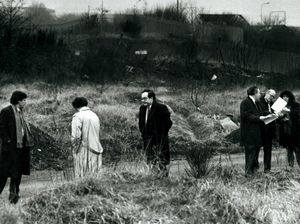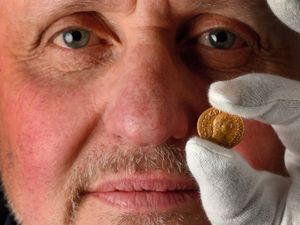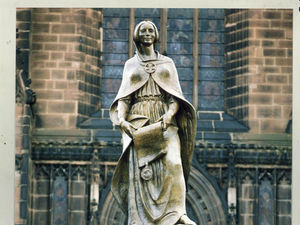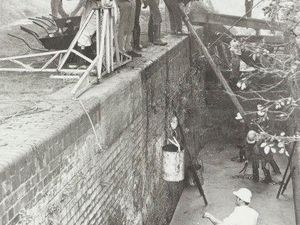Flashback to 1993 and the first step for Wolverhampton science park
It was the first step towards the creation of a thriving hub for scores of businesses and hundreds of workers.

In February 1993, the Government awarded almost £3.5million for reclamation work at Wolverhampton's former gasworks on Stafford Road.
The cash would be used to clear the derelict land of decades of pollution so that it could be transformed into a new science and technology park.
Environment Minister Robin Squire announced the funding during a visit to the 34-acre site and other regeneration projects in the Black Country.
"This latest funding of £3,488,111 which I have approved today will be a catalyst for levering substantial private sector resources into the area,'' he declared.
The decontamination work would require a team excavating down to a depth of 10ft and using 40 lorries a day to remove the polluted topsoil.
A few months after the cash boost was announced, Inner Cities minister John Redwood wore an astronaut-style suit to tour the site and see how work was progressing to replace more than 120,000 tonnes of soil.
The MP wore an astronaut-style suit during his visit to protect himself against any potential risks.

Once occupied by Wolverhampton Gas Works, Hawker Siddeley and the Electric Construction Company, better known as ECC, the land had been empty and unusable for more than decade
John Cogan, contract manager for civil engineers Edmund Nuttall, specialists in excavating contaminated sites, explained what the team was dealing with while clearing the heavily-polluted site.
"There is a whole cocktail of waste products from the gas industry here, including arsenic and acids," he said.
Mr Redwood, who toured the site with Wolverhampton City Challenge chairman Councillor Norman Davies, said: "I think people will welcome this as it means an important site in Wolverhampton is being brought into use.''
The original idea of the park, as home for hi-tech businesses and an incubator to help start-up companies get off the ground, was not universally welcomed, particularly in Birmingham where some argued that the existing facilities in Wolverhampton's bigger neighbour made the park unnecessary - although it was suspected that, it was more likely that they didn't fancy the competition.
New and small firms were attracted by combination of quality accommodation and flexibility - rents and even walls could shift to adapt to the size of each tenant as it grew. Another attraction has been that firms are not tied into long leases.
In 1994 ground was broken on the site with contractor Higgs & Hill Midlands was in charge of work on the 30,000 sq ft £13 million first phase of work on the 32-acre site, which had received major financial backing from the European Regional Development Fund and City Challenge.

Now a three-way joint venture – between the council, theUniversity of Wolverhampton, newly transformed from Wolverhampton Polytechnic, and the local City Challenge board – detailed plans were drawn up for the work, with a two-storey technology centre, a landmark 'communications tower, lecture theatre, dining area and seminar rooms.
Work was finally completed on the first stage of development in 1995, and a string of companies were on the waiting list ready to move in.
Thirty thousand square feet of serviced office accommodation was made available for both new-start and established technology/knowledge based companies. A conference centre was also incorporated into the building featuring an auditorium and a range of meeting rooms of various sizes along with full catering facilities to meet the requirements of tenant companies and outside clients.
Park chief executive of the time, Dr John Cooper, a university lecturer who had nursed the scheme from its early stages, declared: "Wolverhampton Science Park will provide an impressive gateway to the town and bring life to a once derelict area. We hope it comes to symbolise a new confidence.''
By the time of the formal opening ceremony, in October 1996, ambitious plans were already drawn up for an expansion.
The second development phase was completed in November 2000, again with assistance from ERDF and added a 30,000 square feet extension to the Technology Centre building. As well as extra office space, this expansion also incorporated space for laboratory/workshop-style activities.
Continuing demand for space, coupled with the expansion needs of existing tenant companies, led to the completion of the third phase in early 2004 - The Creative Industries Centre
The fourth phase was the award-winning, £10.1m science, technology and prototyping facility - the Science Centre - funded by the University of Wolverhampton and a £4.8M grant contribution from the Black Country Growth Deal.
Now known as the University of Wolverhampton Science Park, today the site is home to more than 100 businesses working in a broad range of technological and creative disciplines including software development, environmental management, engineering design and consultancy, photography and videography, graphics, website design, water technology, training and education, biocidal coatings, healthcare and business support services.





